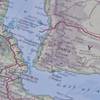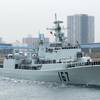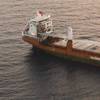EU Decides to Pool Maritime Surveillance Sources
The European Commission informs it has taken a further step towards more effective and cost-efficient surveillance of European Seas. By bringing together surveillance data from civil and military authorities duplication of work can be avoided and savings of up to €400 million per year may be made.
Increased cooperation and sharing of data would help cope more efficiently with real time events at sea such as accidents, pollution incidents, crime or security threats. CISE, the Common Information Sharing Environment for the maritime domain, aims at making all the relevant actors come together and share data. CISE is one of the building blocks of the recently adopted European Maritime Security Strategy.
Maria Damanaki, Commissioner for Maritime Affairs and Fisheries, said: “Sustainable economic growth within the maritime sector can only be ensured if our seas and oceans are safe and secure. CISE aims to make sure that all involved maritime surveillance actors have a complete picture of all events at sea."
"Sharing such information is key to avoid duplication in collection of data and for the use of patrol ships, planes, helicopters or satellites in the same sea areas. Today, about 40% of information is collected several times and 40% to 80% of information is not shared amongst the interested users. We cannot afford such a waste of efforts and money".
In the near future, the Commission intends to launch a project under the EU's 7 Framework Programme for Research in order to test Maritime CISE on a large scale. It will also produce a handbook, together with Member States, on best practice recommendations on how to apply CISE based on experience from existing systems and pilot projects like MARSUNO, Bluemassmed and Cooperation. The Commission will also continue to support measures to develop standards to allow inter-operability between systems.
Background
EU member states carry out maritime surveillance and will continue doing so. However, various surveillance authorities across Europe have insufficient access to each other's information. Through the use of state of the art technology, CISE will integrate existing surveillance systems and networks and make systems interoperable.
Enhancing information exchange between maritime surveillance authorities is one of the key strategic objectives of the EU's Integrated Maritime Policy and an important building block of the recent Maritime Security Strategy. Strengthening the security of seas and oceans is also an essential part of the blue growth agenda to create growth and jobs in the maritime economy.
The EU has vital interest in maritime issues within the EU and around the globe and needs to be able to safeguard those interests adequately and efficiently.
Of its 28 Member States, 23 are coastal states and 26 are Flag States. EU Member States are responsible for the control of a coastline of over 90 000 kilometres in length, bordering two oceans and four seas, in addition to overseas territories and national security installations throughout other oceans.











